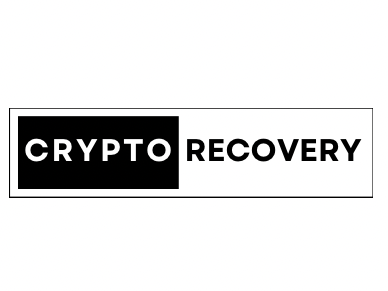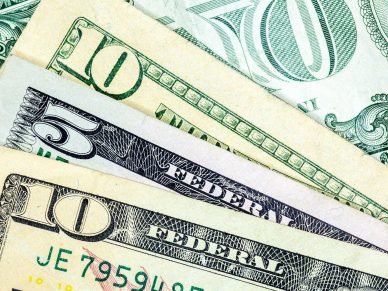Modern Monetary Theory is having a moment. What are its tenets, and could it help with the pandemic recovery?
You’ve no doubt heard someone express the idea that the government should be run like a business. Or a household. Maybe you agreed with the notion. Perhaps it’s even coming out of your mouth.
But there’s a major difference between the government and a business or a household. It can literally print money. Not only that, it’s the only entity that can legally create US dollars. That’s the starting point for modern monetary theory. As the government tries to spend the country out of the COVID-19 pandemic and recession, deficit hawks are pushing back on the effort, saying the national debt is already out of control and exploding it will make matters worse.
“The only potential risk with the national debt increasing over time is inflation,” Stony Brook University professor of economic and public policy Stephanie Kelton told CNBC. “To the extent that you don’t believe the US is facing a long-term inflation problem, you shouldn’t believe that the US is facing a long-term debt problem.”
It’s not that Kelton, who literally wrote the book on the subject (it’s called “The Deficit Myth: Modern Monetary Theory and the Birth of the People’s Economy”), and other proponents of MMT don’t think deficits matter. They think we look at deficits the wrong way.

Inflation & Unemployment
Throughout the pandemic, the US inflation rate has been lower than it was before COVID. In the early months, we were actually close to deflation, with a 0.3% inflation rate in April 2020 and 0.1% in May by Trading Economics calculations.
Just as rampant inflation is evidence that the deficit is too large, Kelton argues, the deficit can also be too small to support demand. Unemployment is evidence of this, she says. Bureau of Labor Statistics data put the US unemployment rate at 6.7% at the end of 2020. That’s much lower than it was last April but still nearly twice the 3.5% rate of the pre-pandemic economy.
The money that is on the government books as a deficit isn’t lost, Kelton says, it’s out in the economy going to work. “In other words, they’re deficits become our surpluses,” she said. “We have to remind ourselves that their red ink becomes our black ink.”
In the long term, modern monetary theory holds that it’s worth the government’s investment in education, infrastructure, and R&D to drive production growth, which in turn drives real GDP growth and keeps the debt: GDP ratio from getting too far out of whack. MMT proponents point to Japan, which has by far the world’s highest debt: GDP ratio at more than 230% yet has long-term interest rates close to zero and an inflation rate below 1%.

Future Generations
A common criticism of deficit spending is that we’re passing the buck to future generations who will be burdened by our expenditures. Kelton doesn’t buy it.
In the aftermath of World War II, the US debt: GDP ratio shot to a record high. “Do we think that our grandparents burdened the next generation with all of those bonds that were sold to win the war, build the strongest middle class, produce the longest period of peace-time prosperity, the golden age of capitalism?” she said. “All of that followed in the wake of fighting World War II, increasing deficits, and massively increasing the size of the national debt. The next generation inherits those bonds, they don’t become burdens to the next generation, they become their assets.”
While we know how things turned out, there were fears the end of the war would spell the return of the Great Depression, especially with the return of millions of servicemen now in need of jobs. Instead, resources that had gone to the war effort were freed up for consumer goods and most of the people leaving the armed forces found private sector jobs, giving them money to spend.
Even allowing that running more debt does harm future generations, real people whom spending would help are suffering now. Meanwhile, the cost of the pandemic to the US economy might be $16 trillion or more, so ending it as quickly as possible will yield plenty of return on investment.

Criticisms
The most common critiques of modern monetary theory argue that MMT in practice will result in hyperinflation and/or that we basically already practice MMT except that proponents would have fiscal authorities (i.e. the government) in control instead of monetary ones (the Federal Reserve).
Those in favor of MMT argue they very much care about inflation. “You first have to say, ‘What is driving the inflation?’” Kelton said. “Because to think that inflation that is going to become important at some future date is likely to be the result of too much aggregate spending is really hard to believe. The US economy hasn’t experienced what we might call demand pull inflation for almost a century.”
With fiscal and monetary roles switched and interest rates set by the Fed permanently at zero in MMT dreams, the only solution to inflation is to increase taxes, right?
“The types of inflation that have been important in the US have always come on the cost side, what we call cost-push inflation,” Kelton said. “They come about because of things like oil price shocks. You might see increases in headline inflation rates because of the housing component or healthcare. So when you think about how to fight inflation, if you’ve got inflation resulting from energy price increases, it’s probably not going to do much to have the Fed raise interest rates or even to have Congress raise taxes. You’ve gotta do something else that’s going to work. I reject the idea that MMT is about using taxes to fight inflation.”
Job Guarantee
What modern monetary theory definitely is about is a job guarantee. MMT proponents strive for full employment at all times. During recessions, when private companies lay off employees, a government job guarantee program would hire them. During boom times, fewer people would be in the program because they could earn more in the private sector (most MMT proposals set the job guarantee pay at a fixed hourly wage).
This would ensure that even in times of recession there would still be money circulating through the economy because there wouldn’t be a large chunk of the populus with little money to spend. “The job guarantee would also serve as a mechanism to ensure price stability within the economy by fixing the price of employed labor,” the Modern Money Network, a “transdisciplinary learning hub dedicated to improving the function, design, operations, and legal regulation of money,” states.
The crux of modern monetary theory is that government spending will eventually pay for itself. It’s not entirely dissimilar to the notion that tax cuts pay for themselves, except in the view of MMT the extra money goes to people who aren’t already wealthy and thus circulates into the economy more effectively. Testing a scaled-back version of the theory might be the great experiment the US embarks on in the pandemic recovery.
















Leave a Reply